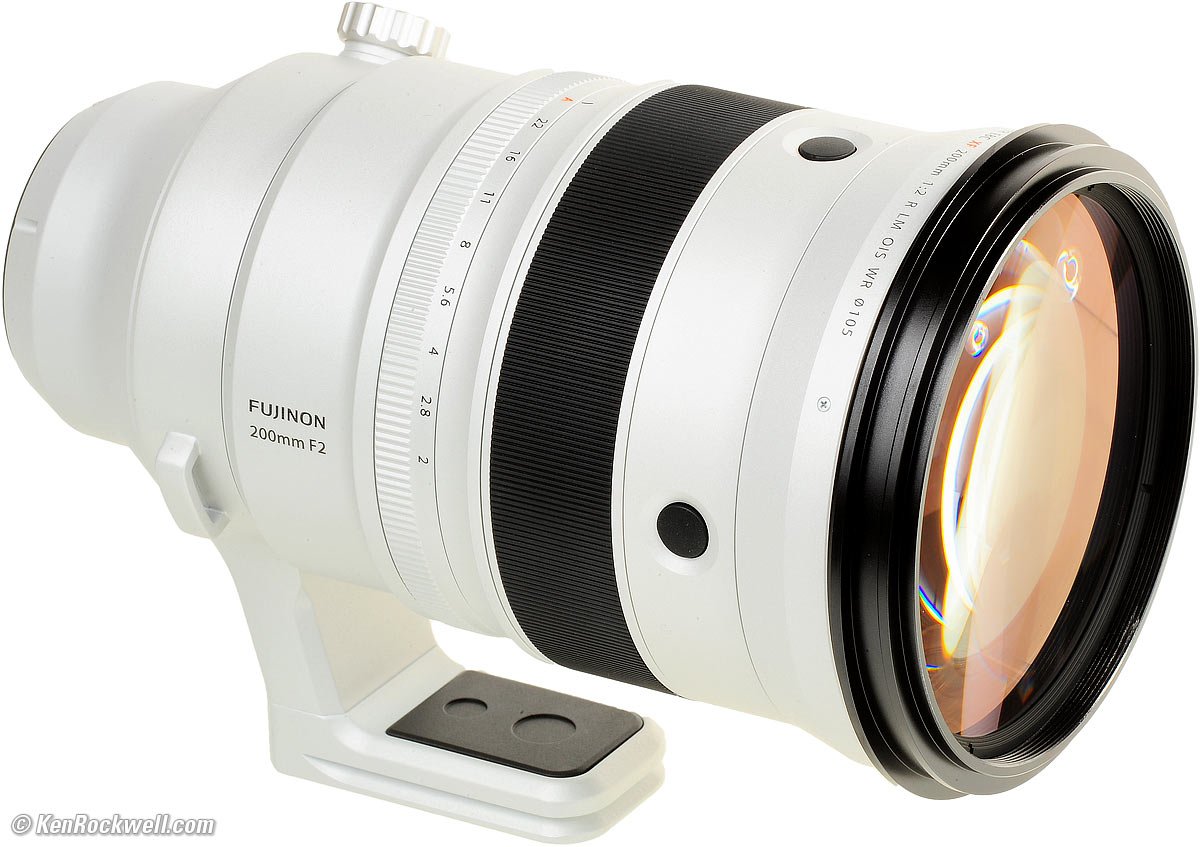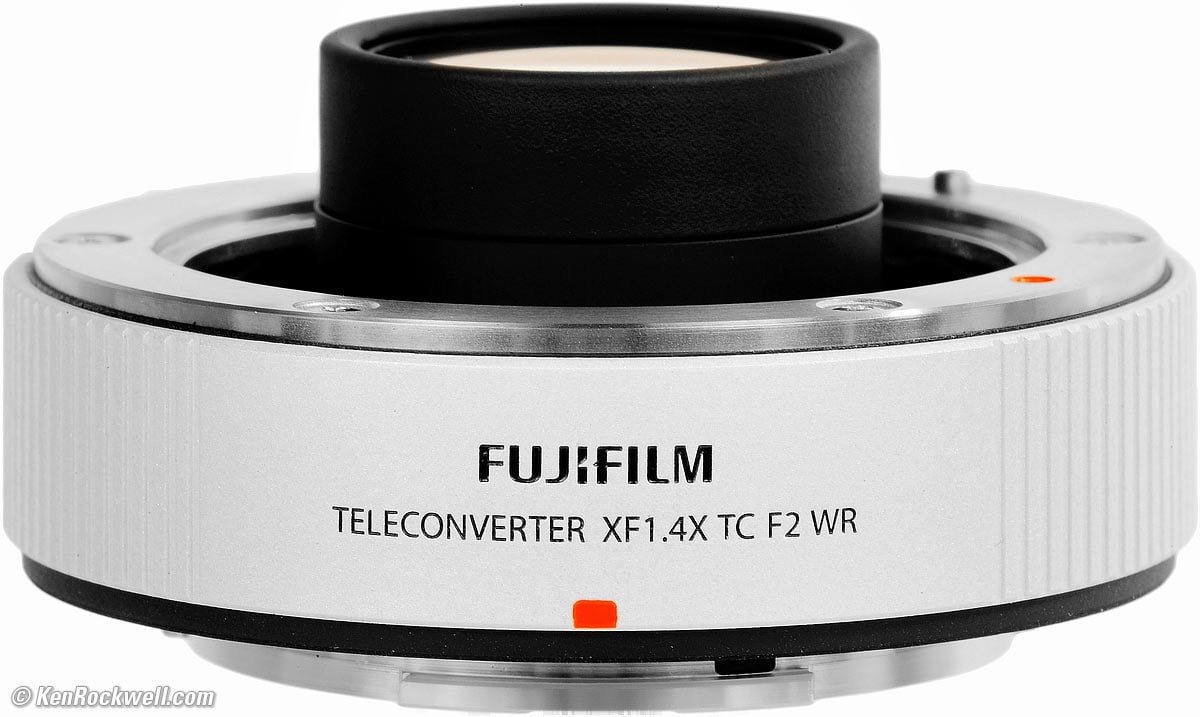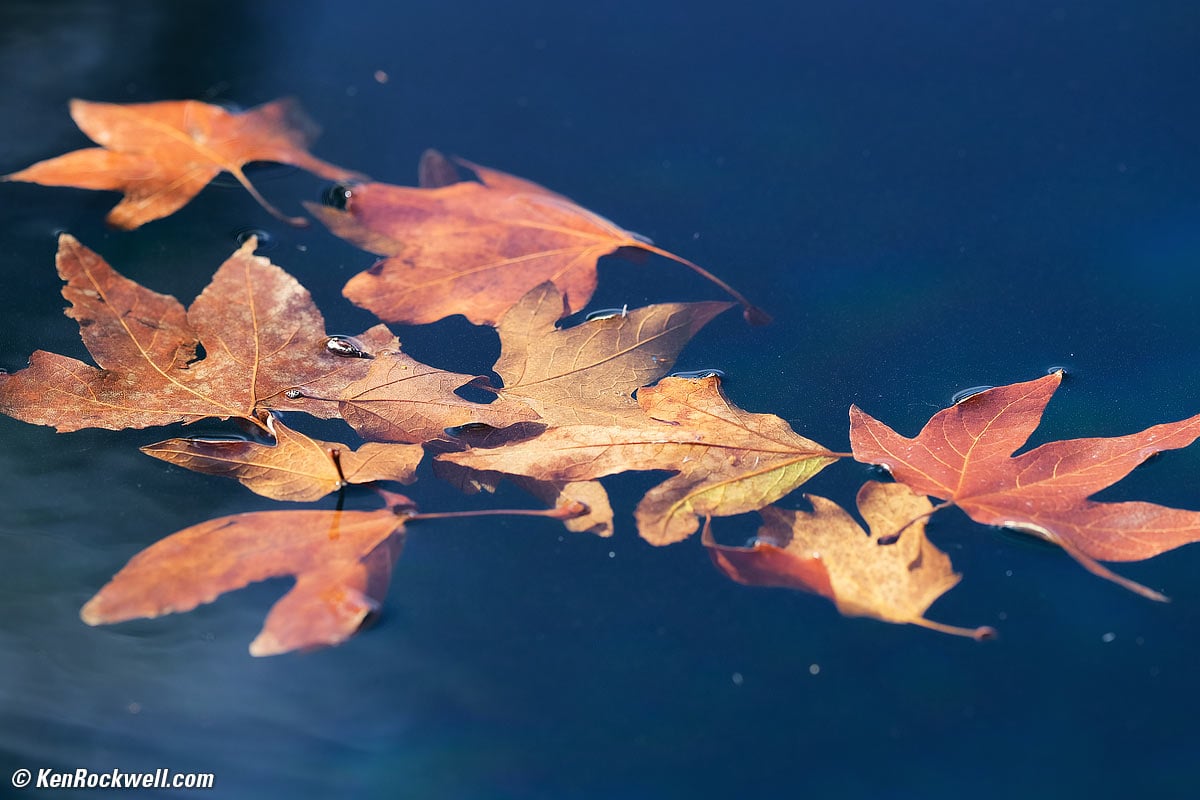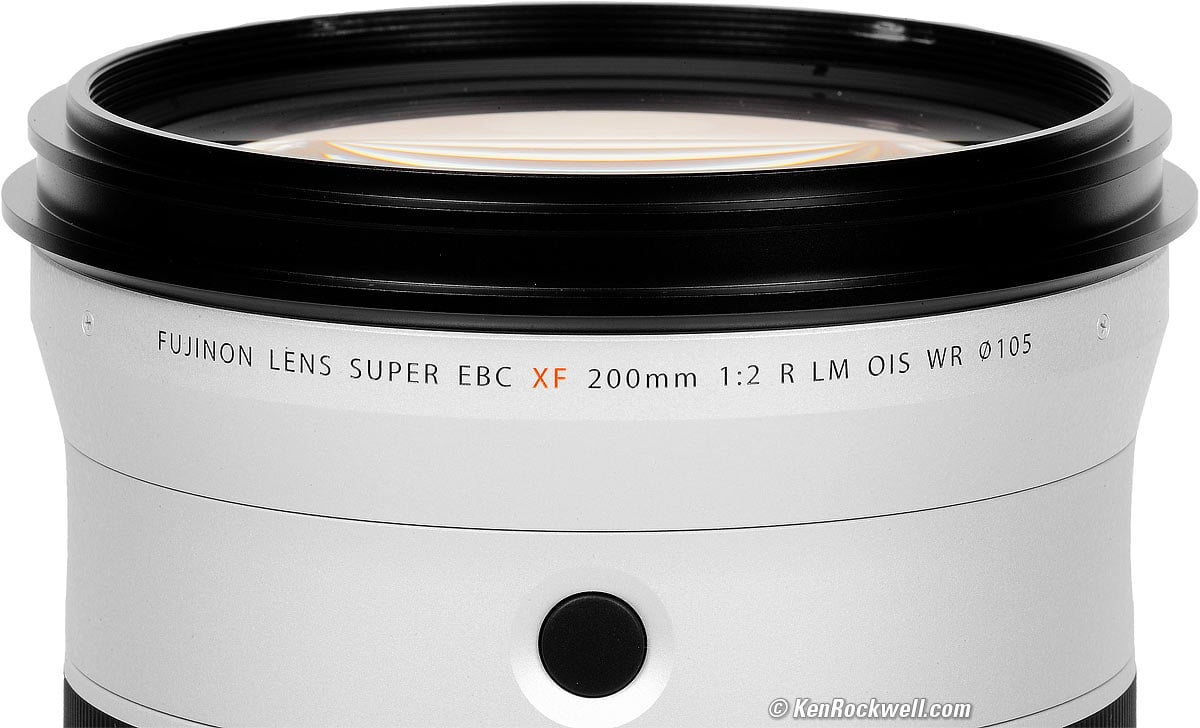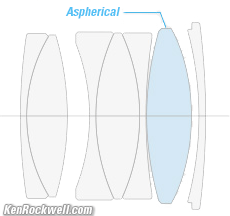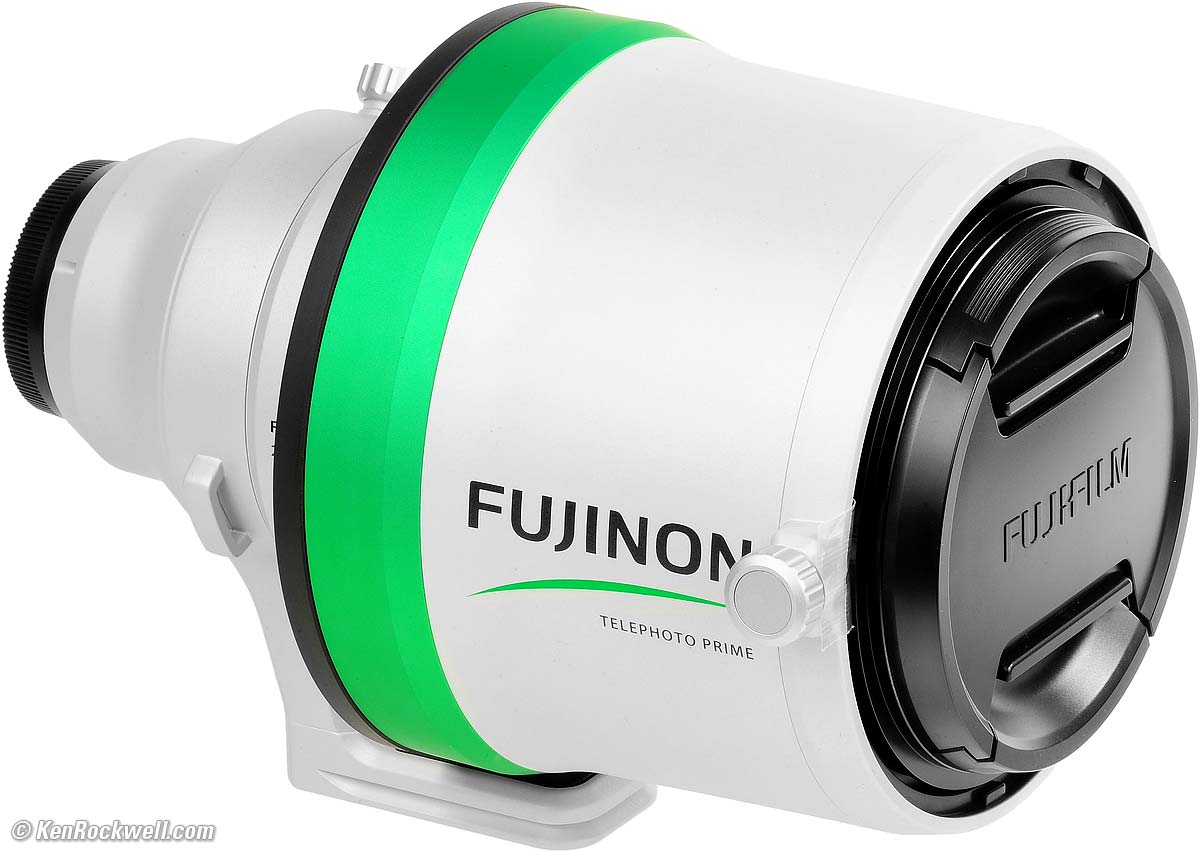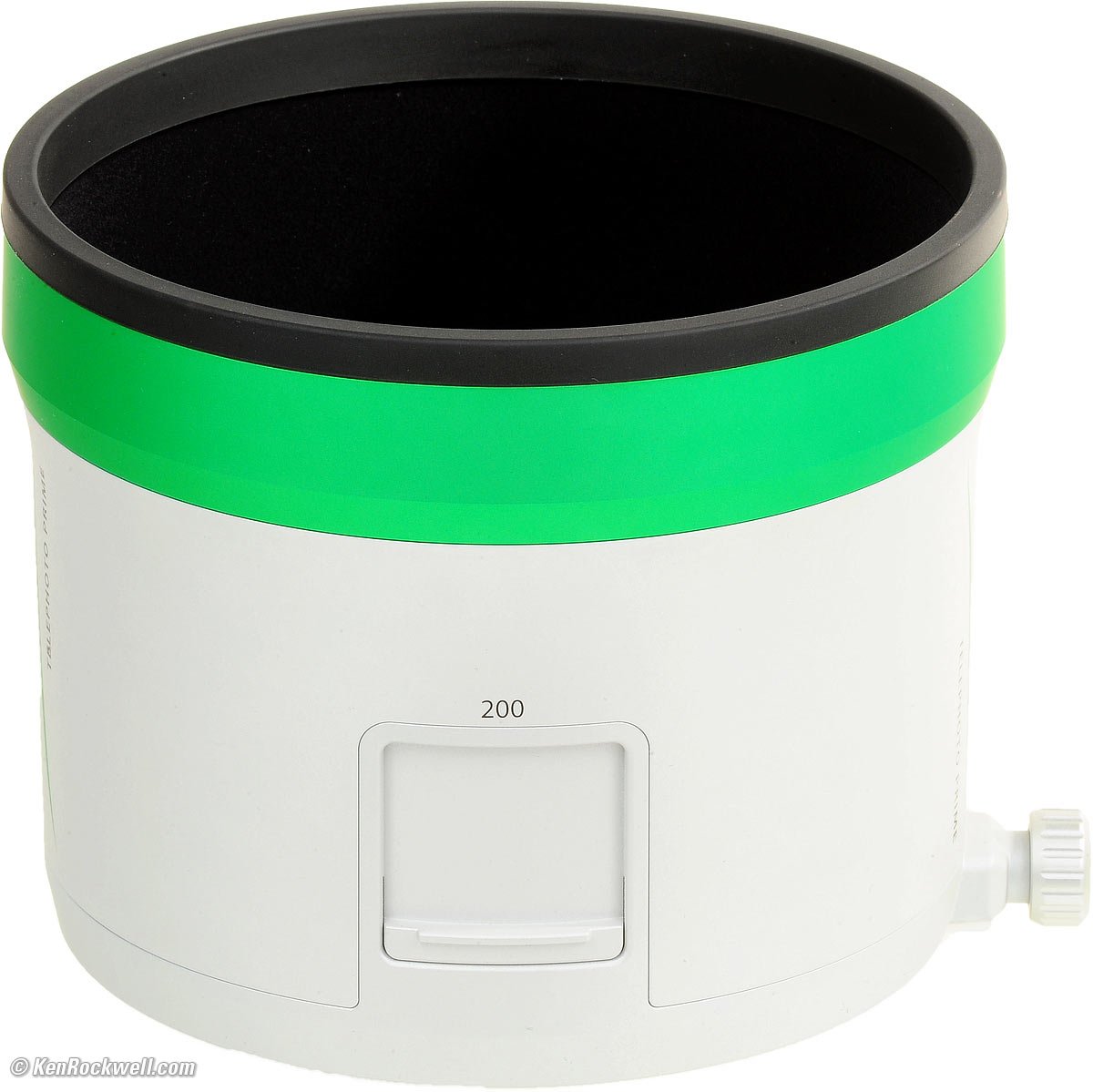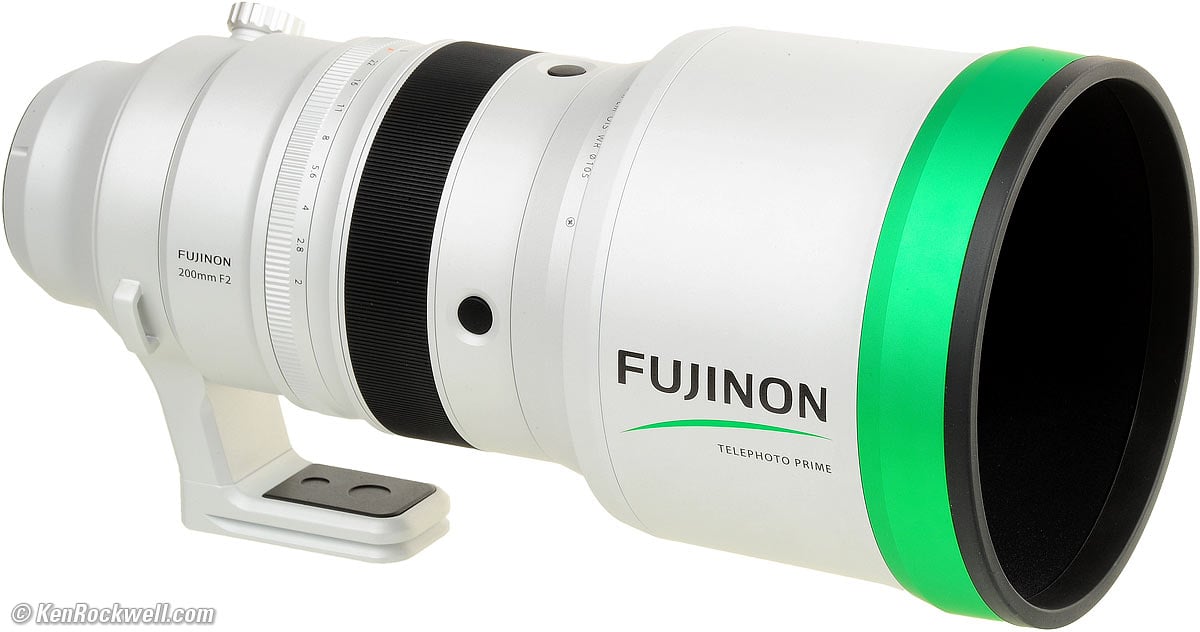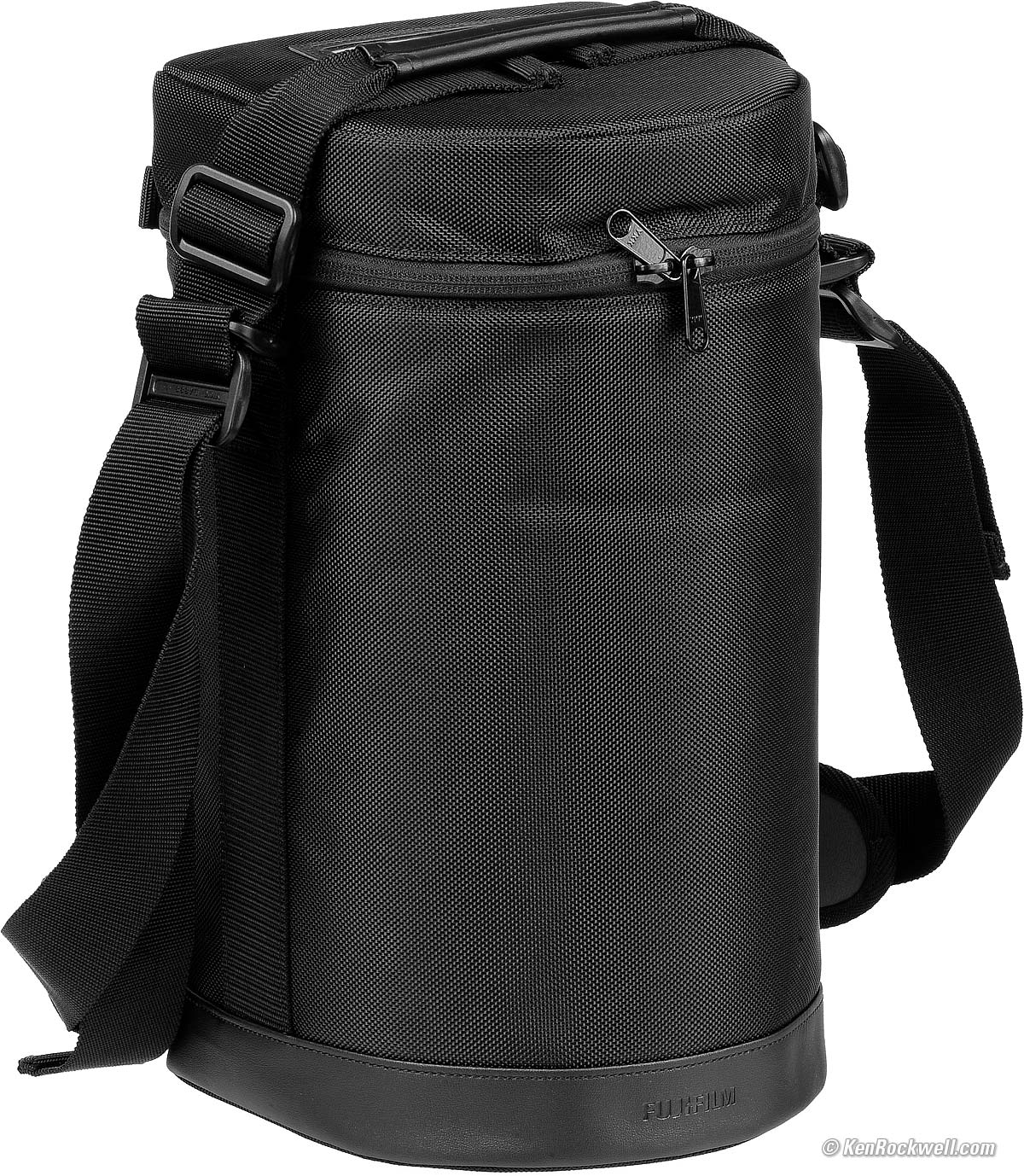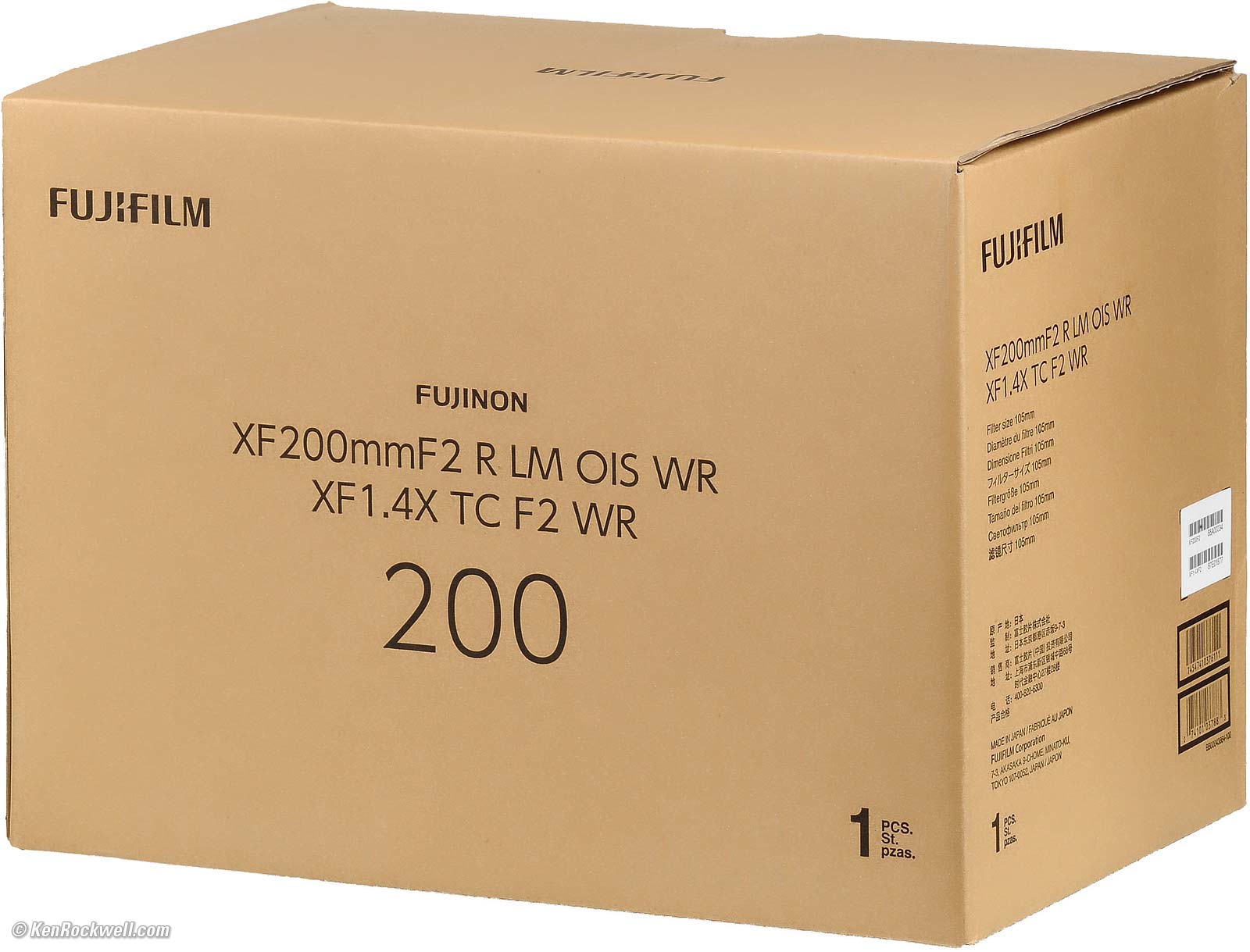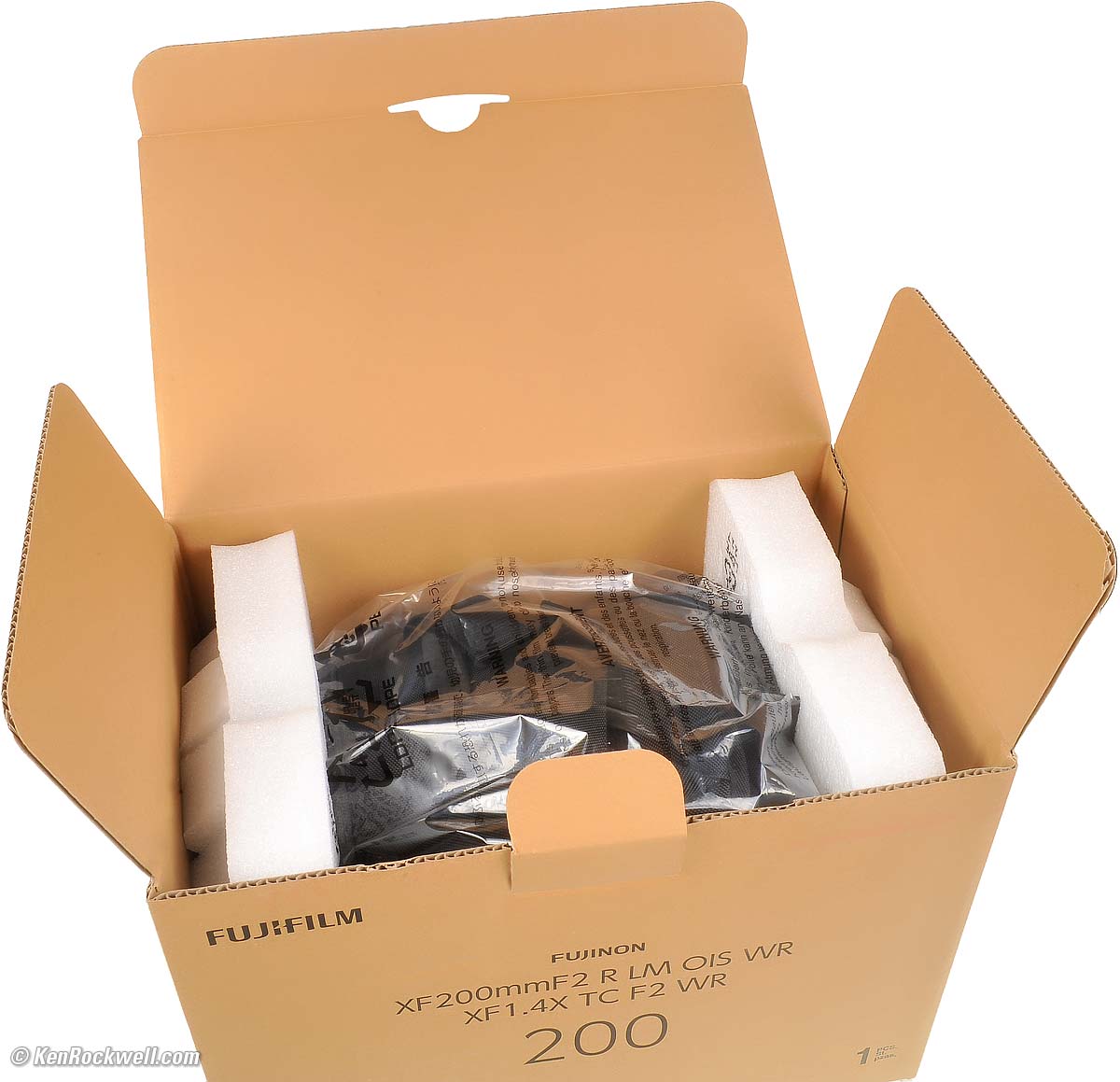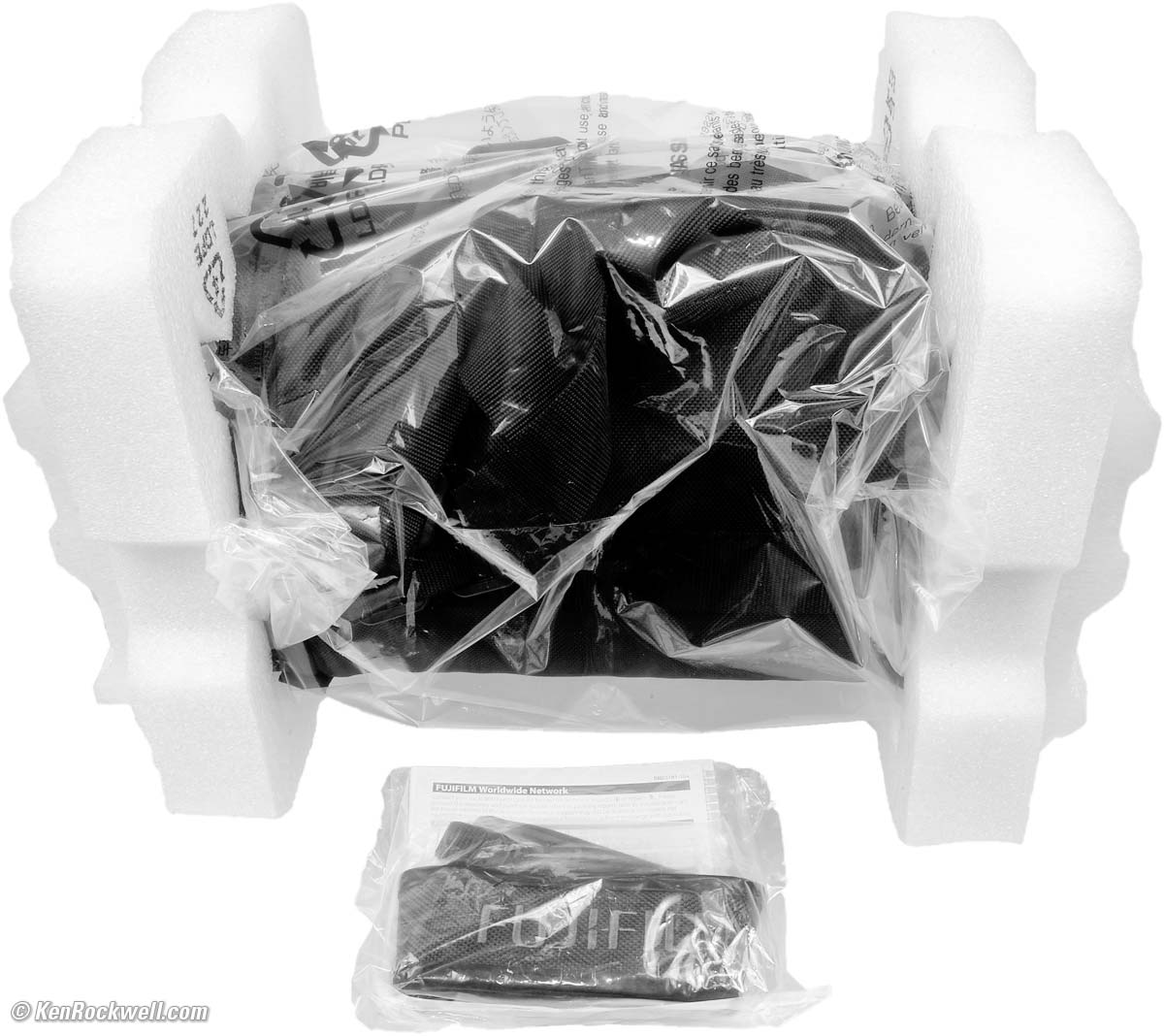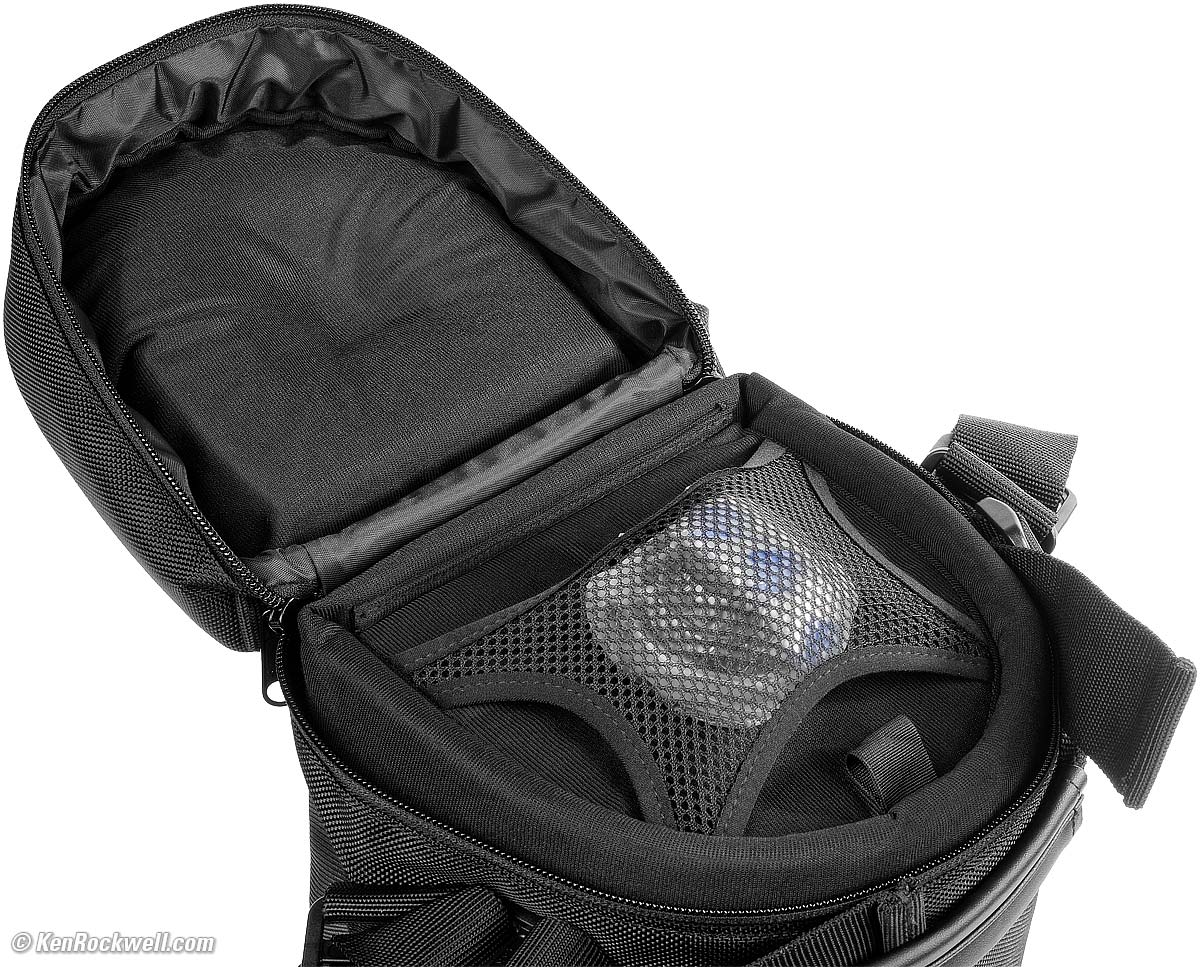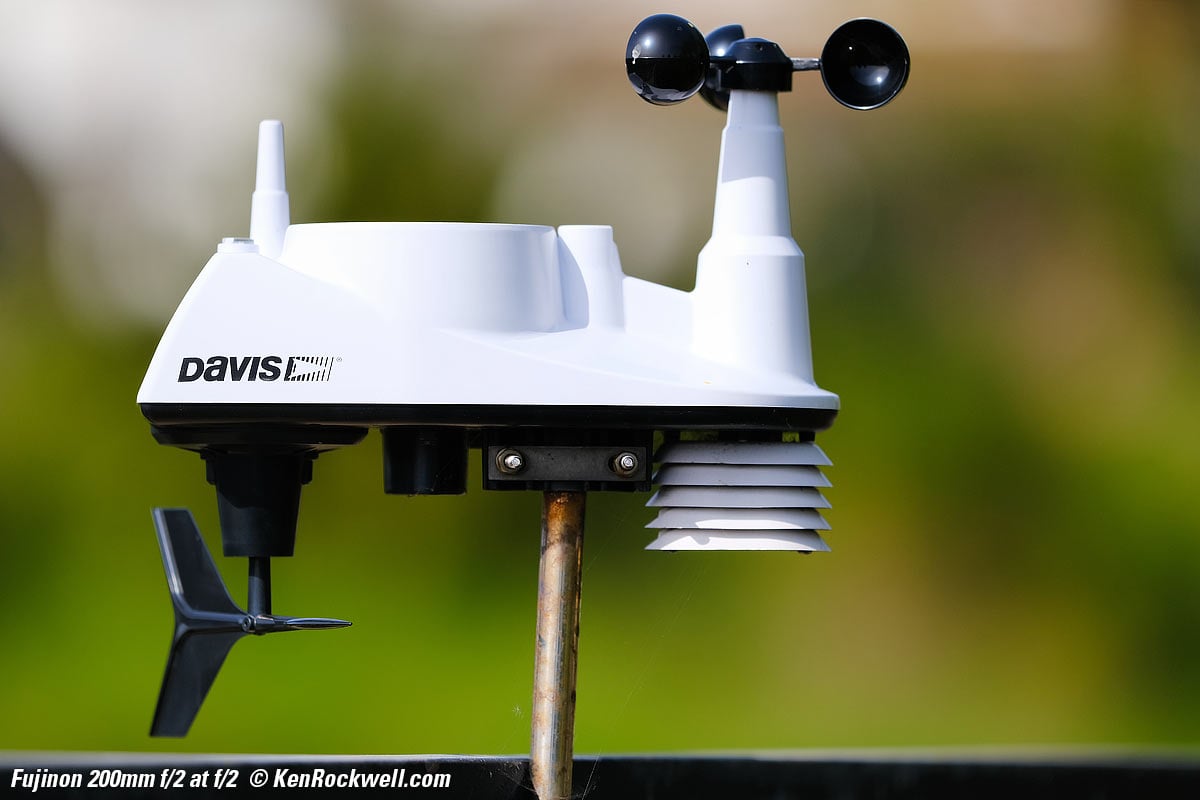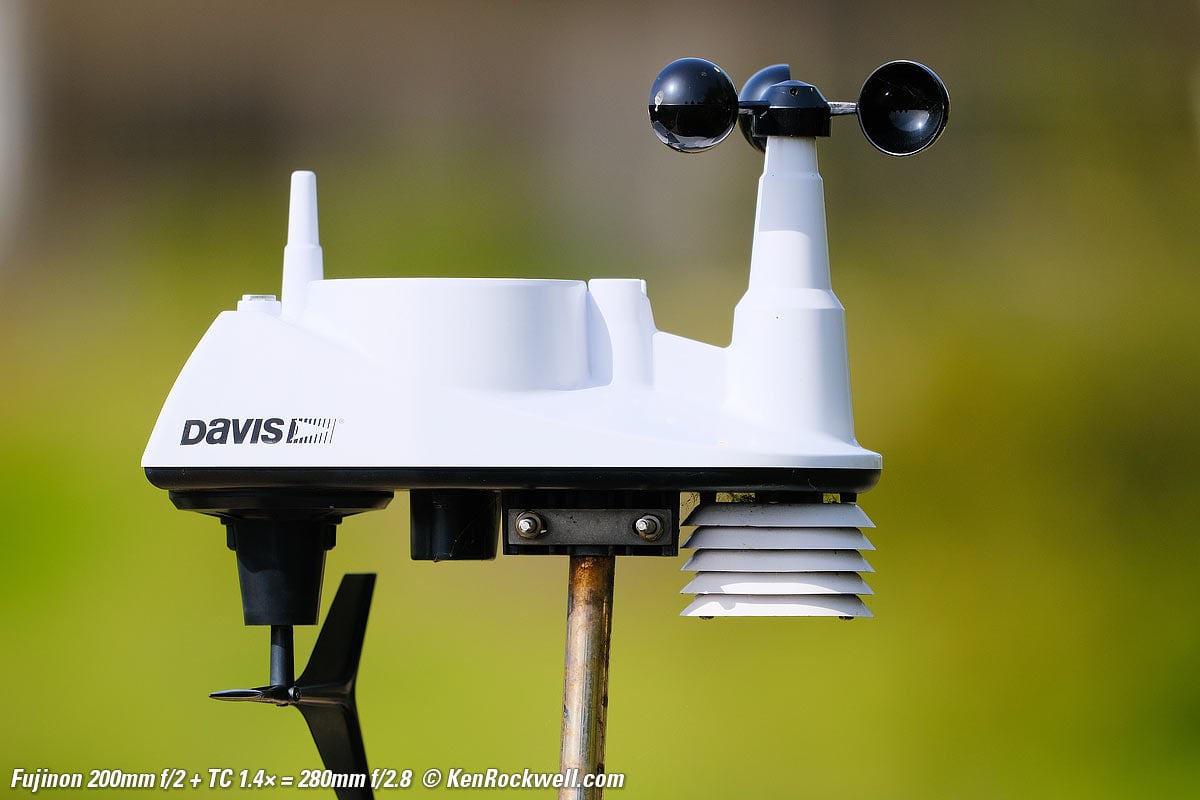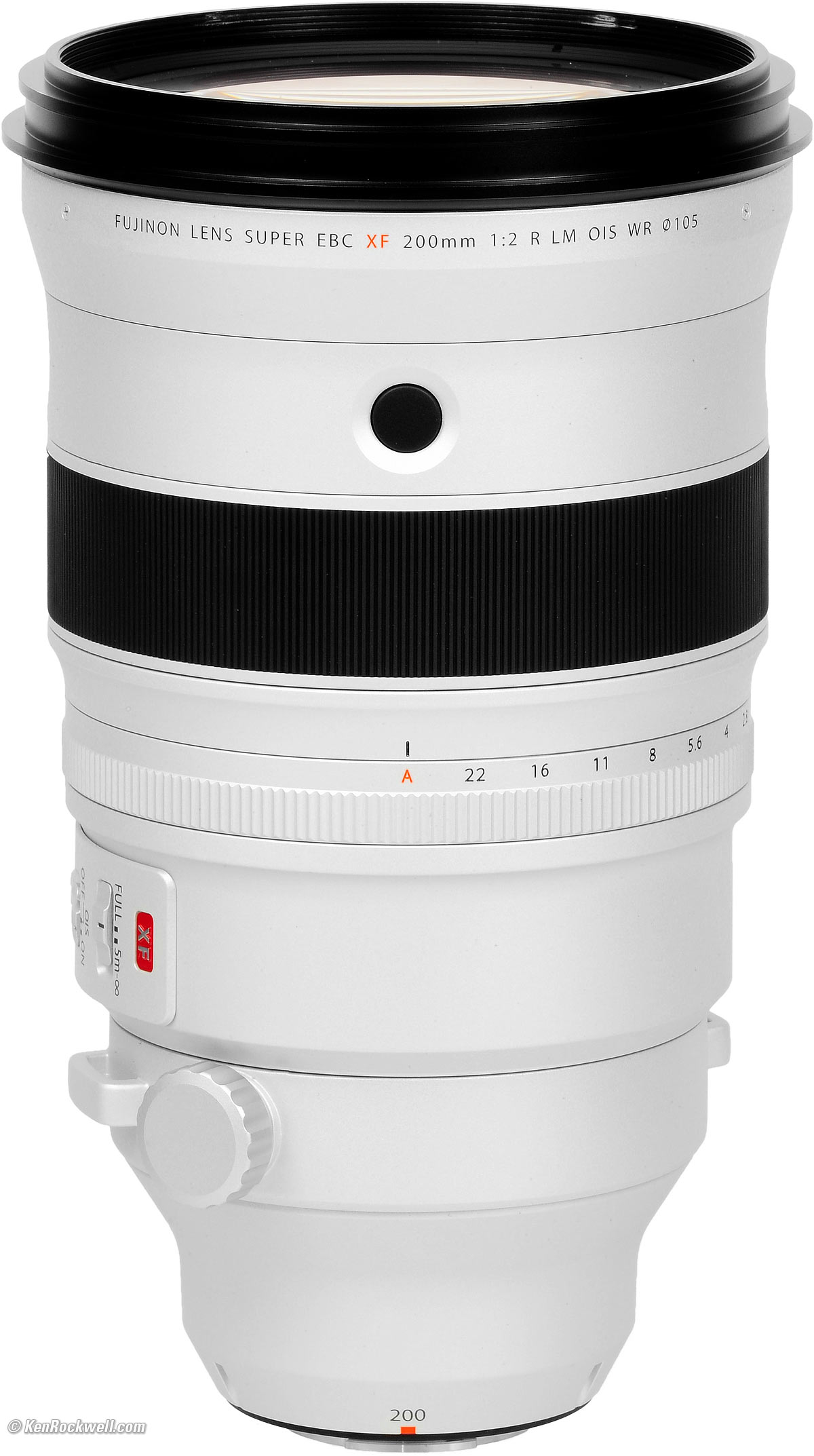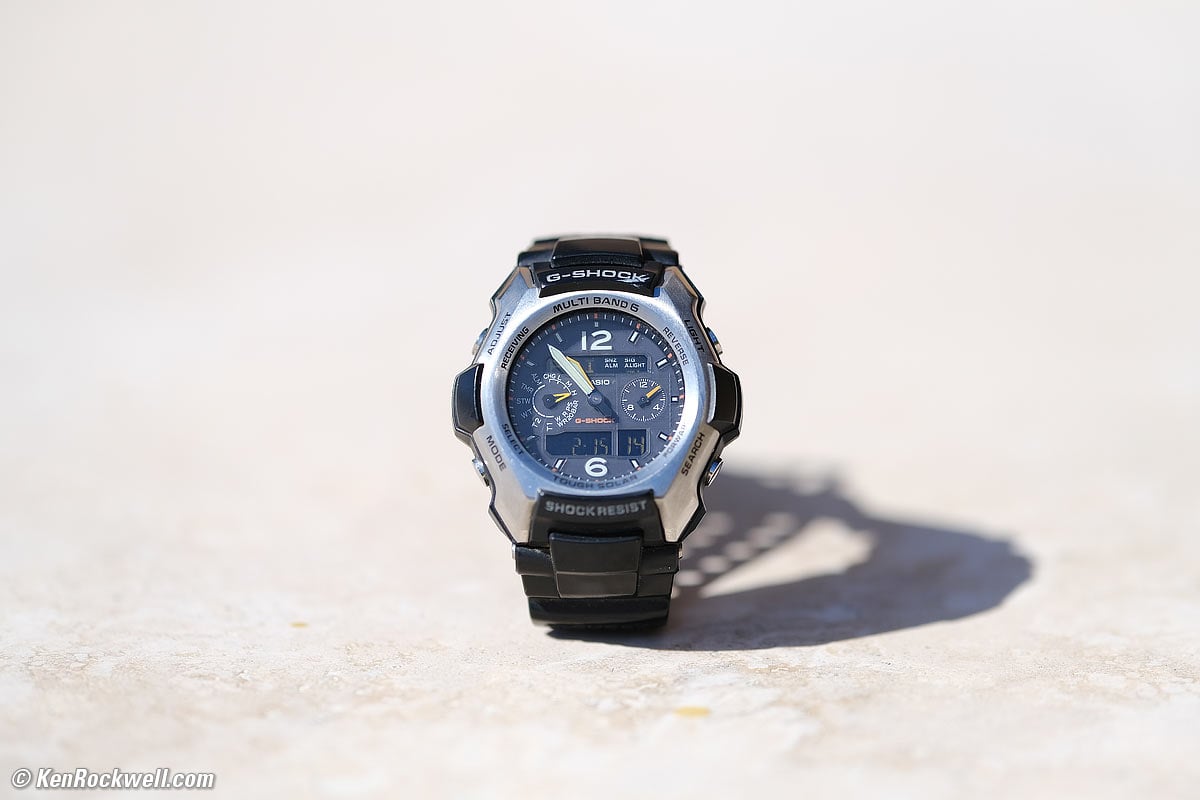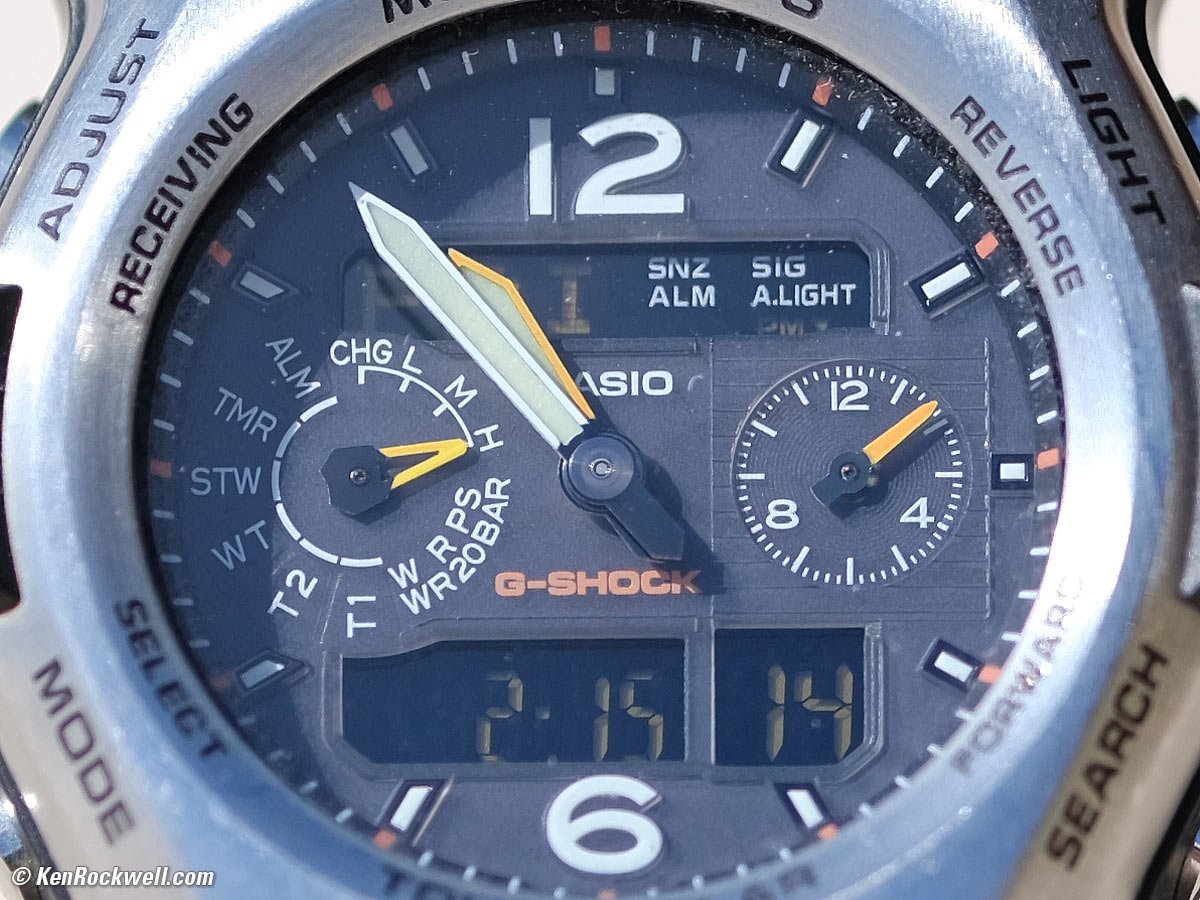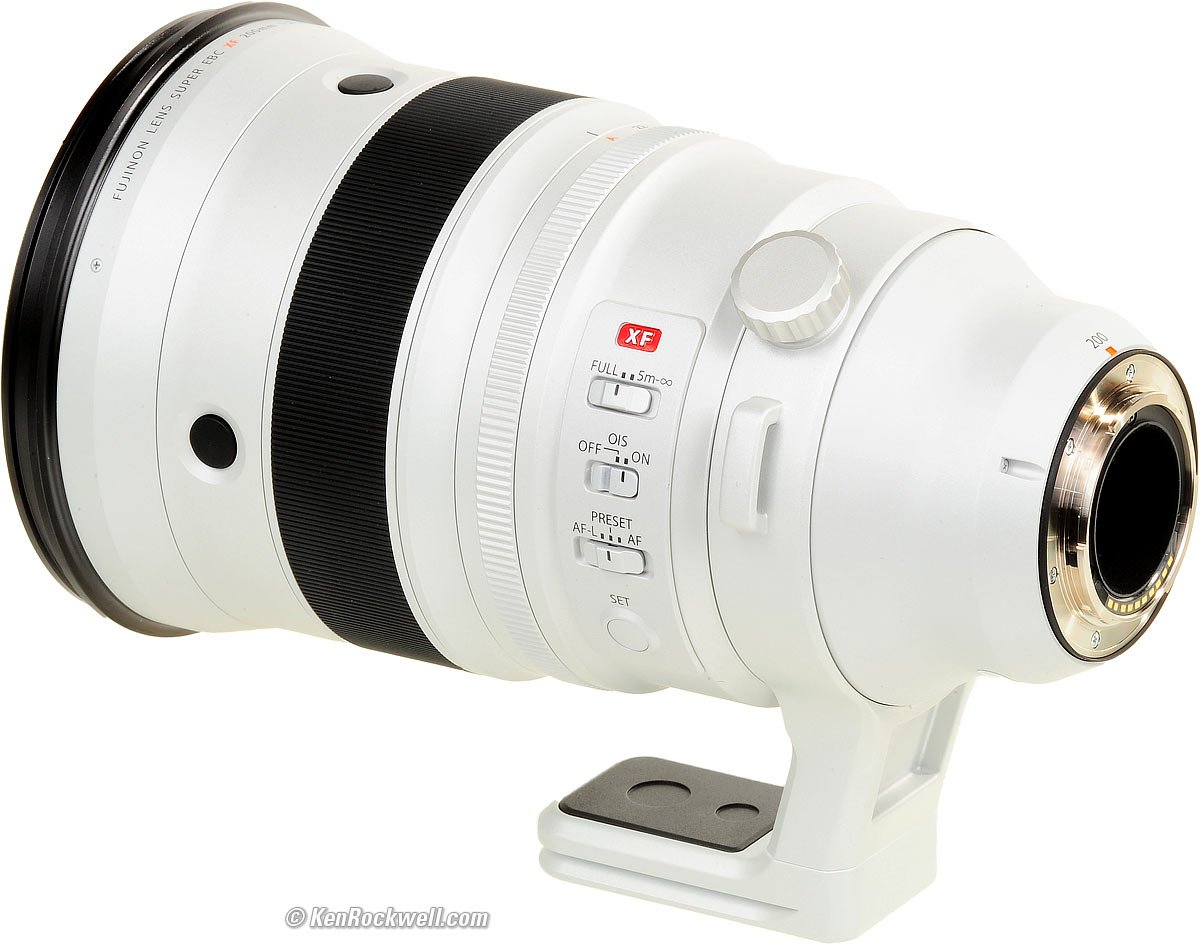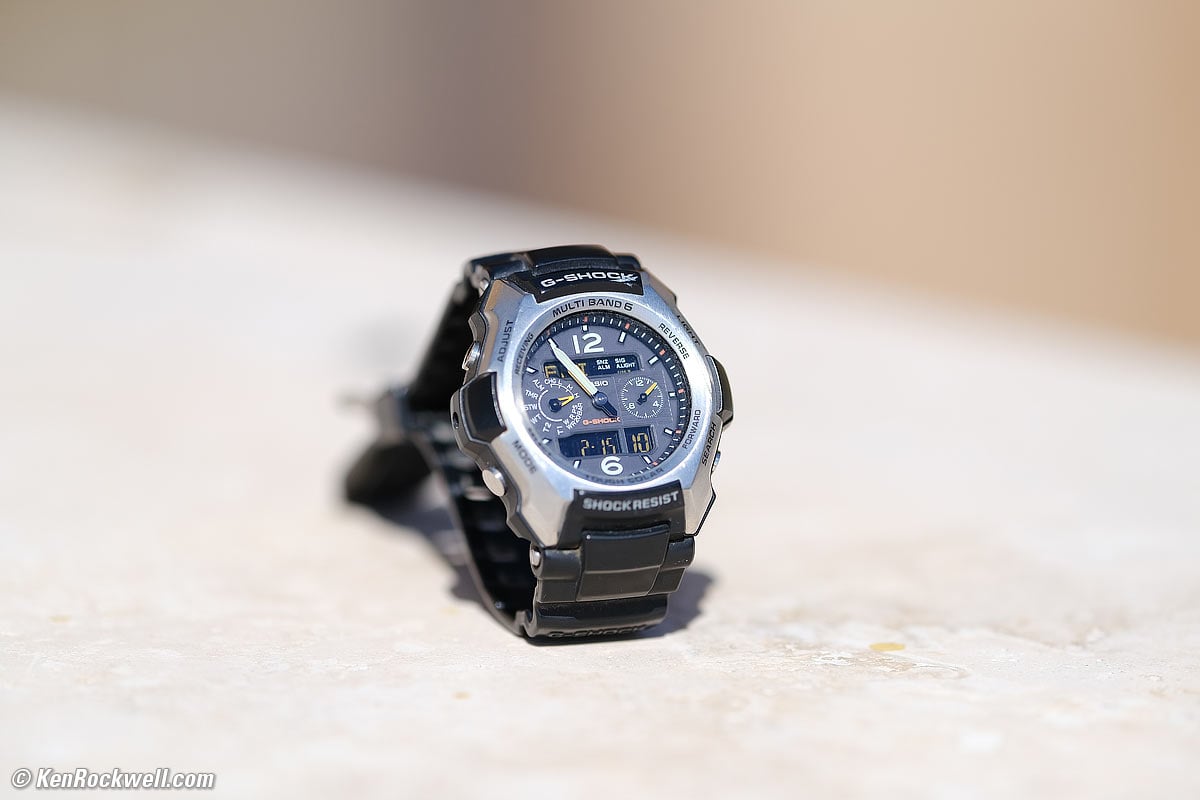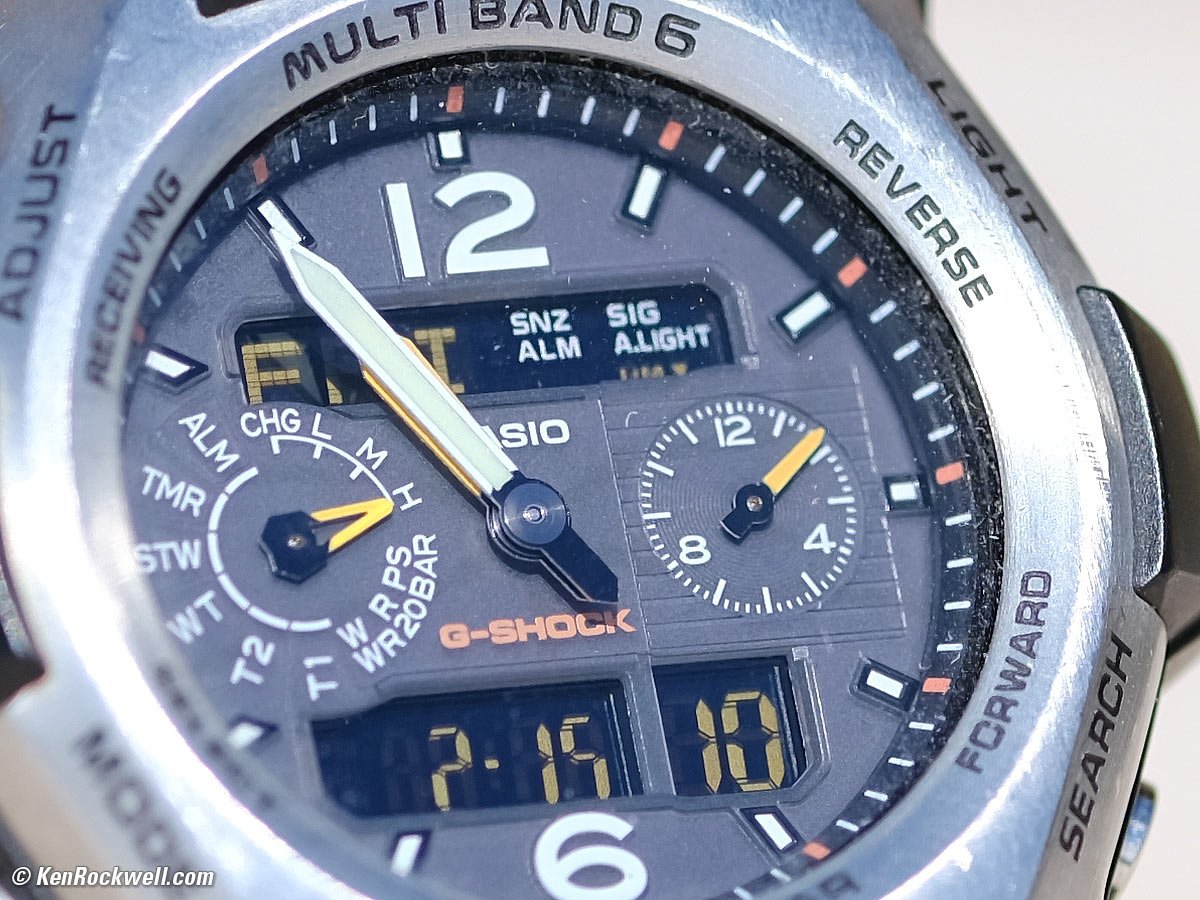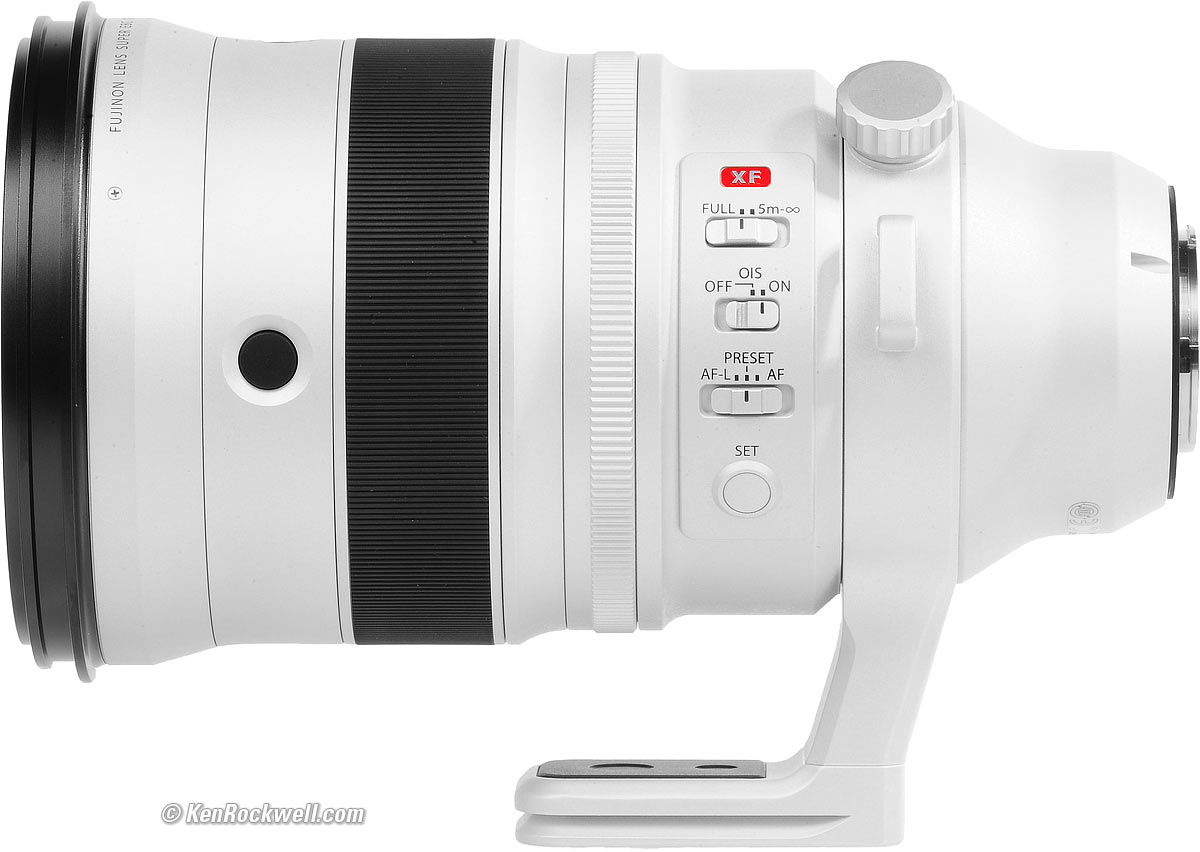Fuji 200mm f/2
Fujinon XF R LM OIS WR w/TC 1.4×
Fujifilm Fujinon Super EBC XF 200mm f/2 R LM OIS WR (metal 105mm filter thread, 79¾ oz./2,260g, 5.9'/1.8m close focus, $4,999). bigger. I got mine at B&H, who also offers a kit with a free 105mm filter. I'd also get it at Adorama.
It comes with a free, tiny dedicated 1.4× teleconverter which turns this into a 280mm f/2.8:
Dedicated Fujifilm XF1.4X TC F2 WR 1.4× Teleconverter (4.475 oz./126.8g, included free). bigger.
This 100% all-content, junk-free website's biggest source of support is when you use those or any of these links to my personally-approved sources when you get anything, regardless of the country in which you live. Fujifilm does not seal its boxes in any way, so never buy at retail or any other source not on my personally approved list since you'll have no way of knowing if you're missing accessories, getting a defective, damaged, returned, non-USA, gray-market, store demo or used lens. Especially with an exotic lens like this, get yours only from the trusted sources I've used personally for decades for the best prices, service, return policies and selection. Thanks for helping me help you! Ken.
February 2019 Better Pictures Fuji Fuji Lenses Sony LEICA Zeiss Nikon Canon All Reviews
Sample Images
These are all shot hand-held as NORMAL JPGs; no RAW files or FINE JPGs or tripods were used or needed.
Zoey, 15 February 2019. Fujifilm X-T3, Fujinon 200mm f/2 wide-open at f/2 at 1/550 at ISO 160, Perfectly Clear. bigger or full-resolution or camera-original © JPG file.
This lens is ultra-sharp, especially at f/2, a far cry better than the first 200mm f/2 lenses of the late 1970s.
This photo shows what this lens is all about: insane sharpness where in focus, and buttery smooth, soft out-of-focus areas. See how this looks three dimensional with Zoey's face popping out from everything else? If it looks this good with a dog, just imagine how this would look with a person!
Leaves on Lake, February 2019. Fujifilm X-T3, Fujinon 200mm f/2 at f/3.2 at 1/750 at Auto ISO 160, Perfectly Clear. bigger or full-resolution or camera-original © JPG file. Even at f/3.2 there is a very tight depth of field.
Introduction
|
I buy only from these approved sources. I can't vouch for ads below. |
This is Fujifilm's first ultra-speed ultra-tele for their APS-C X-mount cameras. A 200mm f/2 makes the same images with the same defocus on APS-C cameras as a 300mm f/2.8 does on full-frame cameras. This 200/2 is priced about the same as the larger Nikon 300mm f/2.8 VR II and Canon 300mm f/2.8L IS II — however as a smaller-format system this 200/2 is smaller and weighs less than a 300/2.8.
It's almost all metal, and finished in a unique pearlescent metallic paint.
It has essentially flawless optics, which all ultra-speed ultra teles have today.
This is a superb lens and can be used to make superlative images. The real question is do you want to invest this heavily into Fujifilm's APS-C format when the same amount of money will get you the equivalent top-end professional full-frame lens from Nikon or Canon?
This lens, like full-frame 300mm f/2.8 lenses, is the end-all in professional portraiture and headshot lenses. If people and headshots are your thing (which they should be if you're shooting Fujifilm cameras as they are highly optimized for people photos), then you deserve this lens.
Fujinon is Fujifilm's brand name that they have used for many, many decades for all their lenses. People in professional television broadcasting have been familiar with Fujinon for as long; Fujinon has made huge $250,000 lenses used in professional network sports broadcasting for many decades. Fujinon knows how to make superb long, fast lenses. This Fujinon stabilized 99× zoom lens is f/1.7 all the way to 355mm, for instance!
I got my Fuji 200mm f/2 at B&H, who also offers a kit with a free 105mm filter. I'd also get it all at Adorama.
Good
 Comes included with a free dedicated XF1.4× TC F2 WR teleconverter. This is a special teleconverter designed to work with this f/2 lens; the regular Fuji 1.4× converter won't work at full aperture.
Comes included with a free dedicated XF1.4× TC F2 WR teleconverter. This is a special teleconverter designed to work with this f/2 lens; the regular Fuji 1.4× converter won't work at full aperture.
 Outstanding optics, as we expect on all ultra-teles.
Outstanding optics, as we expect on all ultra-teles.
 All-metal construction.
All-metal construction.
 Real aperture ring.
Real aperture ring.
 Four Focus Control Buttons around the front of the lens. A switch lets you assign all of these as AF LOCK, AF-ON or RECALL PRESET FOCUS DISTANCE.
Four Focus Control Buttons around the front of the lens. A switch lets you assign all of these as AF LOCK, AF-ON or RECALL PRESET FOCUS DISTANCE.
 Arca-Swiss dovetail on tripod foot.
Arca-Swiss dovetail on tripod foot.
 Built-in optical image stabilizer rated five stops improvement.
Built-in optical image stabilizer rated five stops improvement.
 Much smaller and lighter than the full-frame 300mm f/2.8 lenses it replaces.
Much smaller and lighter than the full-frame 300mm f/2.8 lenses it replaces.
 Made in Japan.
Made in Japan.
Bad
 Manual focus ring is electronic, so it only works if you select MANUAL FOCUS (M) on your camera. Manual focus override only works if you have the shutter half-pressed and only during SINGLE (S) autofocus. The focus ring is completely ignored in CONTINUOUS autofocus (C) mode.
Manual focus ring is electronic, so it only works if you select MANUAL FOCUS (M) on your camera. Manual focus override only works if you have the shutter half-pressed and only during SINGLE (S) autofocus. The focus ring is completely ignored in CONTINUOUS autofocus (C) mode.
Missing
 No aperture ring lock at "A," so it's easy to knock the ring one click from A to f/22 and not realize it — even in the dark.
No aperture ring lock at "A," so it's easy to knock the ring one click from A to f/22 and not realize it — even in the dark.
Specifications
I got my Fuji 200mm f/2 at B&H, who also offers a kit with a free 105mm filter. I'd also get it all at Adorama.
Names
Fujifilm Fujinon XF 200mm f/2 R LM OIS WR. bigger.
Fuji calls this the FUJIFILM FUJINON LENS SUPER EBC XF 200mm f/2 R LM OIS WR with XF 1.4x TC F2 WR Teleconverter Kit.
The lens is the XF200mmF2 R LM OIS WR.
The included teleconverter is the XF1.4X TC F2 WR.
Fujinon is Fujifilm's brand name for their lenses.
Super EBC is Fujinon's brand of multicoating, standing for Super Electron-Beam Coated.
XF is Fuji's line of good lenses for their X-mount cameras.
R means it has an aperture ring.
LM means Linear (autofocus) Motor.
OIS means Optical Image Stabilization.
WR means weather resistant.
∅ 105 means it takes 105mm filters.
TC means a teleconverter, which is included.
Optics
200mm f/2 Main Lens
Fujinon 200mm f/2 internal optical construction.
19 elements in 14 groups.
2 ED extra-low dispersion elements, which help reduce secondary axial chromatic aberration.
1 Super ED extra-low dispersion element, which helps reduce secondary axial chromatic aberration even more.
TC 1.4× Teleconverter
Fujinon TC 1.4× teleconverter internal optical construction.
7 elements in 4 groups.
One Aspherical element.
2.28" (58 mm) ø maximum diameter × 0.59" (15 mm) extension from flange.
4.475 oz. (126.8g) measured, rated 4.59 oz. (130g).
Coverage
APS-C.
Diaphragm
9 rounded blades.
Electronically actuated.
Stops down to f/22 in 1/3-stop clicks.
Focal Length
200mm.
When used on Fuji's APS-C cameras, it sees the same angle of view as a 300 mm lens sees when used on a 35mm or full-frame camera.
See also Crop Factor.
Angle of View
8.1º diagonal on APS-C.
Autofocus
Internal focus.
No external movement as focussed, so no air or dust is sucked in.
Focus Scale
No.
Infinity Focus Stop
No.
Depth of Field Scale
No.
Reproduction Ratio Scale
No.
Infrared Focus Index
No.
Close Focus
5.9 feet (1.8 meters).
Maximum Reproduction Ratio
1:8.25 (0.12×).
Image Stabilizer
Rated five stops improvement.
Caps
Fujifilm 200mm f/2. bigger.
Filters
Metal 105mm filter thread.
Hood
The hood is a nice plastic affair with a flocked inside, rotating filter access port and a metal fixing screw:
Fujifilm 200mm f/2 hood. bigger.
Fujifilm 200mm f/2. bigger.
Hood weight: 7.765 oz. (220.15g).
Case
Included case for Fujifilm 200mm f/2. bigger.
Nylon case included. Also has space for the teleconverter (see Unboxing).
This is a great case. It's comfortable, lightweight and easy to carry and use, and tough enough to save the lens if you drop it off a truck. These soft cases are so much better than the roadie cases that Canon and Nikon used to use for their ultra teles.
It has both a shoulder strap as well as a hand strap at the top. There's a clear business card holder on the top.
Tripod Collar
The tripod collar has 90º click stops.
It does not come off.
Size
4.80" ø maximum diameter × 8.09" extension from flange.
122 mm ø maximum diameter × 205.5 mm extension from flange.
TC 1.4× teleconverter: 2.28" (58 mm) ø maximum diameter × 0.59" (15 mm) extension from flange.
Box size: 17.0 x 13.0 x 11.25 inches.
Weight
79¾ oz. (2,260g) actual measured weight, lens only.
Rated 79.7 oz. (2,265 g).
Hood: 7.765 oz. (220.15g).
TC 1.4× teleconverter: 4.475 oz. (126.8g) measured, rated 4.59 oz. (130g).
System shipping weight: 9.6 pounds (4.35 kg).
Quality
Made in Japan.
Announced
20 July 2018.
Available Since
Late October 2018.
Included
200mm f/2 lens.
Lens hood
Lens shoulder strap.
Padded nylon lens case with its own shoulder strap.
XF 1.4× TC F2 WR Teleconverter with special front cap (to clear the teleconverter's optical protrusion) and a secon
Teleconverter Pouch
Limited 1-Year Warranty
Fujifilm's Model Numbers
16586343 or XF200mmF2 R LM OIS WR.
Price, USA
$4,999, February 2019.
Unboxing
I got my Fuji 200mm f/2 at B&H, who also offers a kit with a free 105mm filter. I'd also get it all at Adorama. These places ship from remote automated warehouses where no one gets to play with your new lens before you buy it.
The box and lens are completely unsealed. There is no way to know if anyone else has been fiddling with your lens, swapping parts and accessories, or even if it's a used lens.
That's why it's critical only to buy from an approved online source, since they ship from automated warehouses where no shifty salesmen or customers ever get to touch your new $5,000 lens before it ships. While new $5 CDs, DVDs, Blu-Rays and bottles of milk and drinking water are sealed and quite obvious if anyone's opened them, paradoxically Fujifilm doesn't bother sealing anything, so your only insurance is to buy only from a trusted online dealer. Buy an exotic lens like this at retail and what you think is a new lens has probably been taken out quite a few weekends use by the store staff for "training."
Fujifilm 200mm f/2 box. bigger.
Open the unsealed corrugated cardboard box, and you'll see the case in a clear plastic bag supported by two big closed-cell foam ends:
Inside the Fujifilm 200mm f/2 box. bigger.
Lift it by the two foam supports and everything comes out thusly:
Fujifilm 200mm f/2. bigger.
The lens and teleconverter is in the case in plastic wrap, and there a second plastic bag floating around inside the box with the lens strap and paperwork. The lens strap attaches to lugs on the tripod collar.
The case straps are shipped attached to the case:
Included case for Fujifilm 200mm f/2. bigger.
Unzip the top of the case and you'll see the teleconverter cleverly nestled in its own divider on top of the lens:
The included teleconverter ships in its own compartment. bigger.
It's easy to get the teleconverter, and even better is that this tiny teleconverter can be left on the lens and then the divider simply rides a little higher, with the lens still super snug inside the case. Bravo, Fujinon!
Performance
Overall Autofocus Manual Focus Breathing
Bokeh Distortion Ergonomics Falloff Filters
Flare & Ghosts Lateral Color Fringes Macro
Mechanics Sharpness Spherochromatism
Stabilization Sunstars 1.4× Teleconverter
I got my Fuji 200mm f/2 at B&H, who also offers a kit with a free 105mm filter. I'd also get it all at Adorama.
Overall
The Fujifilm Fujinon 200mm f/2 performs exactly as we expect for a $5,000 ultra tele: optical perfection.
It's also smaller and lighter than its 300mm f/2.8 full-frame brethren.
Autofocus
Autofocus is fast and almost silent. It feels as if it's using voice coil motors to move a focus group in and out, and I'm sure it's more complicated than that.
While autofocus is fast, it's not instantaneous, and if focus is so far off that the camera's autofocus system isn't sure in which direction to focus the lens, it can slow down or stall until the autofocus system gets a better view of things. This isn't a fault of the lens so much as a limitation of a mirrorless camera's autofocus system. With a super-fast, long lens like this the on-sensor image can be so far out of focus that the camera can't tell what to do unless you help it a little some times.
It's common that it may have to hunt, meaning it may have to overshoot the subject and come right back to it instead of just magically snapping into focus instantaneously as shorter lenses do.
Manual Focus
Manual focus is slow. The great big focus ring responds very slowly which allows great precision, but it's not good for racking the lens quickly from near to far.
The manual focus ring is electronic, so it only works some of the time depending on how you have your camera set.
In SINGLE (S) autofocus mode (selected on-camera) the focus ring works only if you have the shutter half-pressed. It's ignored if you aren't half-pressing the shutter.
In CONTINUOUS (C) autofocus mode (selected on-camera) the focus ring is completely ignored.
In MANUAL FOCUS (M) mode (selected on-camera) the focus ring works only if you don't have the shutter pressed. It's ignored if you half-press the shutter.
Confused? Me too; this is why I prefer mechanically-coupled focus rings.
Focus Breathing
Focus breathing is the image changing size as focused in and out. It's important to cinematographers because it looks funny if the image changes size as focus gets pulled back and forth between actors. If the lens does this, the image "breathes" by growing and contracting slightly as the dialog goes back and forth.
The image from the Fujinon 200mm f/2 grows a little as focussed more closely.
Bokeh
Bokeh, the feel or quality of out-of-focus areas as opposed to how far out of focus they are, is neutral. Foregrounds and backgrounds go so far out of focus at f/2 that fine points as to their quality isn't visible. This is the whole point of this lens: foreground and backgrounds go way out of focus:
Davis 6250 weather station, 12 February 2019. Fujifilm X-T3, Fujinon 200mm f/2 wide-open at f/2 at 1/5,400 at Auto ISO 160, Perfectly Clear. bigger or camera-original © JPG file.
Add the included TC 1.4× and it's even better:
Davis 6250 weather station, 12 February 2019. Fujifilm X-T3, Fujinon 200mm f/2 and included TC 1.4× wide-open at f/2.8 at 1/4,000 at Auto ISO 320, Perfectly Clear. bigger or camera-original © JPG file.
As always, if you want to throw the background as far out of focus as possible, shoot at the largest aperture and get as close as possible.
Distortion
The Fuji 200 2 has no visible distortion, at least as shot on Fujifilm's cameras which correct any that might be there.
Ergonomics
Fujifilm 200mm f/2. bigger.
Except for the slow manual focus ring that by design only responds half the time, this lens is very well balanced for hand-holding and all the controls are easy to use and in the right places.
The four buttons around the front are always under your thumb regardless of how you hold the camera, as they should be.
Just reach back and the panel of slide switches are easy to use.
The aperture ring is the best part: it's big, easy to reach and easy to adjust with your middle fingertip as you hold the lens. Full stops are slightly more deeply detented than third stops.
Most of the lens' weight is at the front, so when put on a body the center of gravity is right above where we cradle this with our hand, leading to easy, perfect balance for hand holding.
This is much lighter and smaller than an equivalent 300mm f/2.8 full-frame setup. While I never carry my 300/2.8 on a daily basis, this smaller lens is much easier to pack and haul so that I'll actually take it out and use it. It's fatter, but the same length as a 70-200/2.8 so it fits (tightly) in a regular bag like my Think Tank Retrospective; I don't need to haul my huge Think Tank Airport Commuter.
The hood comes on and off easily with the big thumb screw.
The Arca-Swiss grooved tripod collar has solid 90º detents and a big metal lock (friction) knob.
Falloff
Falloff is invisible. I'm sure the cameras are correcting it, too.
I've greatly exaggerated the falloff by shooting a gray field and placing these on a gray background; it will not look this bad in actual photos of real things:
200mm f/2 Falloff
© 2019 KenRockwell.com. All rights reserved. |
Falloff is equally invisible in real pictures with the included 1.4× teleconverter (gray boxes on gray backgrounds make it much more visible here):
200mm f/2 + TC 1.4× Falloff
© 2019 KenRockwell.com. All rights reserved. |
Filters, use with
There's no need for thin filters. You should be able to stack several 105mm filters with no vignetting.
Go ahead and use your standard thick rotating polarizer and grad filters.
Flare & Ghosts
There are no significant ghosts or flare.
Lateral Color Fringes
There are no color fringes as shot on Fujifilm cameras, which by default correct for any that may be there.
Macro Performance
This 200/2 doesn't focus very close: 5.9 feet or 1.8 meters, but it is ultra-sharp especially at f/2 where many lenses become softer at close distances:
Casio G-Shock Solar Atomic Watch wide-open at f/2 at close-focus distance, 15 February 2019. bigger or camera-original © file.
1,200 × 900 pixel crop from above. bigger or camera-original © file.
If this 1,200 × 900 pixel crop is about 6" (15cm) wide on your screen, then the complete image printed at this same high magnification would be about 21 × 31" (1.7 × 2.6 feet or 50 × 80 cm).
If this 1,200 × 900 pixel crop is about 12" (30cm) wide on your screen, then the complete image printed at this same extreme magnification would be about 42 × 62" (3.5 × 5.2 feet or 1.05 × 1.6 meters).
Mechanical Quality
Fujifilm 200mm f/2. bigger.
As we expect for a $5,000 lens (but often don't get from Nikon today; their $3,600 500mm f/5.6 is made in China), this lens is immaculately well made of alloy and made domestically in Japan.
Finish
Pearlescent paint.
Hood
Rubber front hood bumper.
Plastic hood body.
Lens Front Bumper
None.
Filter Threads
Metal.
Hood Bayonet Mount
Metal.
Front Barrel
Metal.
Focus-Button Ring
Metal.
Focus Ring
Rubber-covered plastic.
Mid Barrel 1
Section between focus and aperture rings: metal.
Aperture Ring
Metal.
Mid Barrel 2
The section that holds the switches between the aperture ring and tripod collar: metal.
Slide Switches and Switch Section Bezel
Plastic.
Tripod Collar
Metal.
Arca-Swiss grooves.
The foot is attached to the collar stub with four Allen-head screws and has both standard ¼″ × 20 and ⅜″ tripod threads.
Rear Barrel Exterior
Plastic.
Identity
Engraved around front of lens and filed with black or red paint.
Internals
Seems like all metal!
Dust Gasket at Mount
Yes.
Mount
Chromed metal.
Markings
All engraved and filled with paint.
Serial Number
Engraved and filled with black paint on the bottom of the section that holds the switches just ahead of the tripod collar.
Date Code
None found.
Noises When Shaken
Moderate clunking.
Sounds like an uncaged OIS section.
Made in
Japan
Sharpness
Lens sharpness has nothing to do with picture sharpness; every lens made in the past 100 years is more than sharp enough to make super-sharp pictures if you know what you're doing. The only limitation to picture sharpness is your skill as a photographer. It's the least talented who spend the most time worrying about lens sharpness. Skilled photographers make great images with whatever camera is in their hands; I've made some of my best images of all time with an irreparably broken camera! Most pixels are thrown away before you see them, but camera makers don't want you to know that.
If you're not getting ultra-sharp pictures with this, be sure not to shoot at f/11 or smaller where all lenses are softer due to diffraction, always shoot at ISO 160 because cameras become softer at higher ISOs, avoid shooting across long distances over land which can lead to atmospheric heat shimmer, be sure everything is in perfect focus, set your camera's sharpening as you want it and be sure nothing is moving, either camera or subject. If you want to ensure a soft image with any lens, shoot at f/16 at ISO 1,600 at default sharpening in daylight through heat shimmer of rapidly moving subjects at differing distances in the same picture.
These caveats aside, this lens, like all major ultra-speed ultra-teles, is essentially optically perfect. Given a $5,000 budget, it's not hard for a major optical company like Fujinon to make a great lens. It's ultrasharp corner-to-corner even shot wide-open at f/2. If you can't gat a sharp picture with this lens you're either a poor photographer, shooting at too high an ISO, stopped down too far or something moved or isn't in perfect focus.
Fuji's MTF curves confirm this:
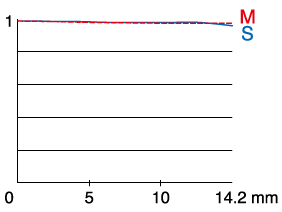 |
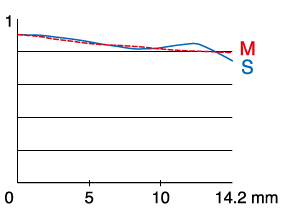 |
MTF at 15 cyc/mm at f/2, lens alone. |
MTF at 45 cyc/mm at f/2, lens alone. |
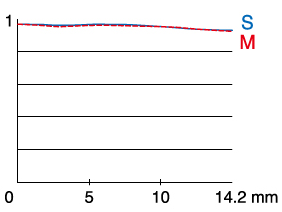 |
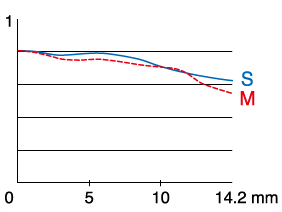 |
MTF at 15 cyc/mm at f/2, lens with TC 1.4×. |
MTF at 45 cyc/mm at f/2, lens with TC 1.4×. |
15 and 45 cycles per millimeter on APS-C is the same as 10 and 30 cycles per millimeter on full frame.
Spherochromatism
Spherochromatism, also called "color bokeh" by laymen, is an advanced form of chromatic aberration in a different dimension than lateral color. It can cause colored fringes on out-of-focus highlights, usually seen as green fringes on backgrounds and magenta fringes on foregrounds. Spherochromatism is common in fast lenses of moderate focal length when shooting contrasty items at full aperture. It goes away as stopped down.
This lens is superb in that I'd expect to see spherochromatism, and there is nearly none. Bravo, Fujinon!
Casio G-Shock Solar Atomic Watch, 15 February 2019. bigger or camera-original © file.
1,200 × 900 pixel crop from above. bigger or camera-original © file.
If this 1,200 × 900 pixel crop is about 6" (15cm) wide on your screen, then the complete image printed at this same high magnification would be about 21 × 31" (1.7 × 2.6 feet or 50 × 80 cm).
If this 1,200 × 900 pixel crop is about 12" (30cm) wide on your screen, then the complete image printed at this same extreme magnification would be about 42 × 62" (3.5 × 5.2 feet or 1.05 × 1.6 meters).
Image Stabilization
Optical Image Stabilization (OIS, IS or VR (Vibration Reduction) works great. It's rated as 5 stops improvement.
The finder image locks-down and images are super sharp hand-held.
I almost always get perfect tripod-equivalent sharpness hand-held at 1/60, get results that good about half the time at 1/15 and 1/30, and rarely get them at 1/8 and slower:
| Shutter Speed | 1/4 |
1/8 |
1/15 |
1/30 |
1/60 |
1/125 |
1/250 |
1/500 |
| % Perfectly Sharp Shots | 15 |
20 |
60 |
60 |
90 |
100 |
100 |
100 |
At slow speeds I always fire a burst and out of that burst I can pick the perfectly sharp one. Camera shake is completely random, so each shot is different from the rest. Just make longer bursts at slower speeds to increase your chances to get the one perfectly-sharp frame you need.
Sunstars
With a rounded diaphragm at large apertures that becomes nonagonal at the smallest apertures, it's hard to get 18-pointed sunstars on brilliant points of light.
1.4× Teleconverter
Dedicated Fujifilm XF1.4X TC F2 WR 1.4× Teleconverter (4.475 oz./126.8g, included free). bigger.
The included teleconverter is tiny, about the size of a DSLR lens rear lens cap. It's so small that even if you're reading this on an on an iPhone Plus or Max held vertically this photo is larger than life!
It works great; autofocus and sharpness seem the same as without the converter. Of course the converter is only adding 40% to the magnification, so it's not doing that much.
It only works with this lens. Its front protuberance prevents it from attaching to the back of other lenses. The 200mm f/2 has a lot of airspace at its mount.
The lens reads as a 280mm f/2.8 with an aperture range of f/2.8 ~ f/32 when used with this converter.
No, again due to the front protuberance you can't stack two converters.
Tripod Collar
The tripod collar is solid, smooth and sturdy, and with its great friction and lock knob and 90º clicks couldn't be better. It's got Arca-Swiss grooves.
It doesn't come off.
User's Guide
I got my Fuji 200mm f/2 at B&H, who also offers a kit with a free 105mm filter. I'd also get it all at Adorama.
Fujifilm 200mm f/2. bigger.
Full / 5m-∞ Switch
This is a focus limiter.
Leave it at FULL.
The 5m-∞ position prevents the lens from autofocusing closer than 5 meters (16 feet). Use this setting only if you're having a problem with the lens attempting to focus on irrelevant close items, or if for some reason the lens is "hunting" from near to far when looking for distant subjects.
OIS (Optical Image Stabilization) Switch
ON / OFF
Leave it ON unless you're making exposures longer than a second on any kind of tripod. Leave it on even if on a tripod; tripods shake, too, with long lenses like this.
Turn it off only for long time exposures.
AF-L / PRESET /AF Switch
This sets the function of the four buttons around the front. They all do the same thing as set here.
AF-L: Locks autofocus as long as a button is held down.
PRESET: Tap a button and the lens resets to the previously set focus distance. You don't need to hold a button, just one tap and the lens will motor all the way home. To preset this distance, simply focus the lens where you want it and tap the SET button.
AF: Starts autofocus as long as a button is held down.
Hood
You need to mount it just right otherwise the FUJINON name reads upside-down. Tape over it if you don't want to look silly in public.
Recommendations
This is the only super tele made for the Fujifilm cameras. This is a great lens for people and portrait photography.
This 200/2 can be great for night or indoor sports, but for daytime outdoor sports I'd use the Fujinon 100-400mm.
I use a clear (UV) protective filter instead of a cap. I only use a cap when I throw this in my bag, otherwise I leave a clear protective filter on my lens at all times so I'm ready to shoot instantly.
I'd use a 105mm B+W single-coated 010 UV filter to protect this lens. You can pay more for the Fujifilm PRF-105 Protective Filter, the 105mm B+W multi-coated 010M UV filter or a 105mm Tokina dirt-resistant protective filter, but the difference is in fancy coatings that have very little effect on the pictures. I got my Fuji 200mm f/2 at B&H, who also offers a kit with a free 105mm filter. I'd also get it all at Adorama.
This 100% all-content website's biggest source of support is when you use those or any of these links to approved sources when you get anything, regardless of the country in which you live. Fujifilm does not seal its boxes in any way, so never buy at retail or any other source not on my personally approved list since you'll have no way of knowing if you're missing accessories, getting a defective, damaged, returned, non-USA, gray-market, store demo or used lens. Especially with an exotic lens like this, get yours only from the trusted sources I've used personally for decades for the best prices, service, return policies and selection. Thanks for helping me help you! Ken.
Thanks for helping me help you!
Ken, Mrs. Rockwell, Ryan and Katie.
© Ken Rockwell. All rights reserved. Tous droits réservés. Alle Rechte vorbehalten.
Help Me Help You
I support my growing family through this website, as crazy as it might seem.
The biggest help is when you use any of these links when you get anything. It costs you nothing, and is this site's, and thus my family's, biggest source of support. These places always have the best prices and service, which is why I've used them since before this website existed. I recommend them all personally.
If you find this page as helpful as a book you might have had to buy or a workshop you may have had to take, feel free to help me continue helping everyone.
If you've gotten your gear through one of my links or helped otherwise, you're family. It's great people like you who allow me to keep adding to this site full-time. Thanks!
If you haven't helped yet, please do, and consider helping me with a gift of $5.00.
As this page is copyrighted and formally registered, it is unlawful to make copies, especially in the form of printouts for personal use. If you wish to make a printout for personal use, you are granted one-time permission only if you PayPal me $5.00 per printout or part thereof. Thank you!
Thanks for reading!
Mr. & Mrs. Ken Rockwell, Ryan and Katie.
